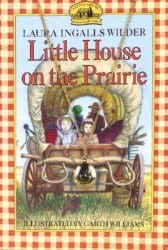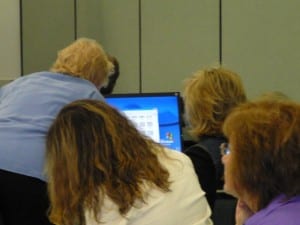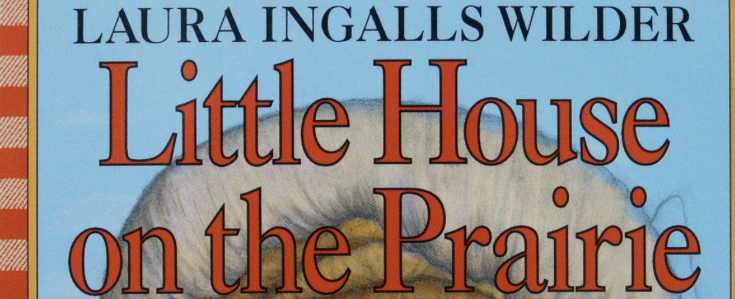Editors, Tutors, Authorship and Plagiarism
 In 1932, shortly after the start of the great depression, Laura Ingalls Wilder, a 65-year-old woman, published her first book, Little House in the Big Woods. That book would be the first in the Little House series, which included the well-known Little House on the Prairie among others.
In 1932, shortly after the start of the great depression, Laura Ingalls Wilder, a 65-year-old woman, published her first book, Little House in the Big Woods. That book would be the first in the Little House series, which included the well-known Little House on the Prairie among others.
However, the story surprising literary success bas become a bit more complicated as time has gone on.
Wilder had a daughter, Rose Wilder Lane who was an accomplished author herself long before the Little House books were written. Shortly after Lane’s death in 1968, her heir discovered a manuscript written in Lane’s handwriting entitled The First For Years. Though not a part of the Little House series, it was instead an account of Wilder’s early marriage, it was written in a style and tone not known to belong to her.
It had been widely known that Lane played a significant role in the Little House books as an editor, but many scholars believe that the new discovery showed that Lane did more than edit the works, but largely wrote or rewrote them.
The exact nature of the relationship between Lane and her mother will likely never be known. But given that we’re in an age of tutors, ghostwriters and editors it’s getting more and more difficult to define what authorship is and, with that, what plagiarism is.
Because, when so much creativity is passes through so many hands and is packaged so thoroughly, it can be difficult it can be difficult to know where your work stops and the work of others around you begins.
The Rise of Tutoring
 One of the areas where this is being felt most acutely is in academia. There, more and more students are turning to tutoring services, both online and off, to help them with their essays and other written work.
One of the areas where this is being felt most acutely is in academia. There, more and more students are turning to tutoring services, both online and off, to help them with their essays and other written work.
Honest tutors do a great deal to help prevent plagiarism. By working closely with students, they can more easily spot issues and call them out. However, other tutoring services have been found to be mostly essay mills, writing student papers for them, such as with a recent scandal in Australia.
But between those two extremes sits countless tutors who are torn between the ethics of their job and needs of their student customers. While no one begrudges a tutor the right to point out grammar mistakes and unclear passages, at what point does the correcting go from legitimate assistance to creating a new work that’s not the student’s?
It’s a very difficult question with no easy answers, but it’s one writing tutors have to think about every day.
While tutoring services are nothing new, they’ve been on the rise in recent years, both paid and unpaid, a trend that’s been continuing over the past two decades. As tutoring becomes more commonplace and writing becomes more competitive, these boundaries are going to get more and more focus.
Unfortunately though, there’s just not an easy answer. There’s no magic line that says where a tutor has crossed into committing plagiarism and many cases of tutor involvement are gray area, without a clear decision.
Ghostwriting and Recipes
 Not long after I posted about the changing nature of attribution in recipes, a scandal came up in Australia that seemed to only further prove the point.
Not long after I posted about the changing nature of attribution in recipes, a scandal came up in Australia that seemed to only further prove the point.
There, Gold Coast fitness instructor Ashy Bines found herself at the center of a plagiarism controversy over recipes that were posted in her diet plans were copied from other sources. This not only resulted in her being the subject of a petition against her, but the recipient of death threats.
Bines, however, said that she didn’t write the recipes. Instead, she claims she “outsourced” them to an unnamed nutritionist that betrayed her trust.
Ghostwriting is incredibly common in publishing. Recently, celebrities even openly discuss hiring ghostwriters and which ones they choose for their books and when they are searching for one.
However, we don’t expect all celebrities to be expert authors. In Bines case, much of the outrage stems from the fact that she outsourced what was supposed to be her core skill, nutrition and fitness.
Still, the case raises a lot of difficult questions including: What responsibility does Bines have for the plagiarism? And was her use of a ghostwriter appropriate even without the plagiarism?
Once again, don’t expect easy answers. Though I’ve said repeatedly that you are ultimate responsible for what carries your name, how practical is that in an era where so many hands touch almost everything that is published?
Tying it Together
So what we have now are three disparate looks at attribution and authorship. But what does it all mean?
It means, quite simply, that authorship has never been a simple thing but it’s been getting increasingly complicated because, on the Internet, nearly everyone is a publisher.
When you visit a website for a small business, who created the text on the site? Was it the head of the company? Was it an employee? Was it a contractor?
In a similar vein, who had final approval? Who or what group of people is actually responsible for the work that goes on the site? Depending on the company or organization, that can vary a great deal.
To be clear, copyright law has resolved a lot of these issues when one looks at who owns the work. Work for hire law, copyright transfers, etc. make it so that the practical/legal ownership of the work is usually simple, but the ethical ownership of it is still a very different thing.
And it’s that ethical ownership that comes up a great deal when dealing with plagiarism. A student may legally own an essay largely written by a tutor depending upon the arrangement, but it would still likely be seen as plagiarism if it were turned in and presented as original work. Likewise, Bines likely owns the work of her ghostwriting nutritionist, but her reaction shows she doesn’t feel ethically responsible for it, at least not fully.
This ethical issue not only comes up a great deal when a work turns out to be a plagiarism, but when it is plagiarized. After all, there are many cases where it appears that one document plagiarized another but it turns out that both documents simply share a common source, which may be both ethical and legal to pull from, as with some stock content.
That, in turn, is the point of authorship, it carries both rights and responsibilities. The rights include the ability to call the work your and to own it, even if that is not a legal claim. However, it also caries the responsibility of owning any ethical violations that come with the work and being responsible for its failings, not to mention the responsibility of creating the work itself.
Yet time and again we are seeing creators who are trying to enjoy the benefits of authorship while without bearing the responsibilities. Whether it’s plagiarism blamed on a ghostwriter or a student leaning too hard on a tutor to do the work for a school paper, the goal is to enjoy the benefits of being an author without actually taking on all of the obligations that come with it.
That’s what plagiarism is about but it’s also the core of a slew of issues around plagiarism and attribution. But as the waters of attribution get muddied more, expect all of these issues to get more complex, more nuanced and more difficult to approach.
This is going to be a challenge for publishers, musicians, filmmakers, academics, researchers, business owners and anyone else who creates or distributes content. If you meet that definition, expect to think more about authorship in 5 years than you do today, which is probably more than you thought about it 10 years ago.
Bottom Line
The idea of authorship cuts to the core of plagiarism and attribution. When one asks “What is plagiarism?” what they are really asking is “When, who and how should someone be attributed when their work is used?” That’s a complicated question and the who of it deals directly with authorship.
However, in a society where nearly every work passes through multiple hands, either formally or informally, authorship is going to become an incredibly confusing and difficult thing. While there has always been editors and tutors, with so much need for content and so many layers between idea and publication, authorship is not a simple question.
To be clear, this doesn’t mean plagiarism isn’t real and that there are no authors. Plagiarism is a very direct and clear attempt to enjoy the benefits of authorship without taking on the responsibilities, namely the work. What it does mean is that everything in between clear plagiarism and clear originality is going to get fuzzier and fuzzier as time goes on.
That’s not something easy to deal with, but as a society that values creativity, it is an issue we have to both accept and address.
Want to Reuse or Republish this Content?
If you want to feature this article in your site, classroom or elsewhere, just let us know! We usually grant permission within 24 hours.
